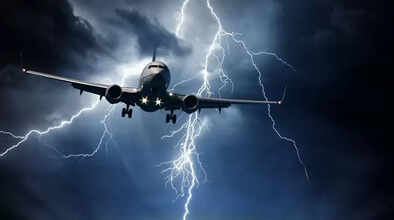DGCA: DGCA issued new rules for flying in bad weather, safety is the first priority..

Aviation regulator DGCA has updated its rules for flying in bad weather. The new rules say that the safety of passengers and crew is more important than the flight schedule. Pilots have been advised to immediately decide to divert or return the flight if the weather is bad or dangerous. These rules have come after the recent helicopter accidents in Kedarnath and the incident of strong turbulence in an Indigo flight going to Srinagar last month. DGCA has issued a new circular for all scheduled and non-scheduled operators, which gives detailed guidelines to deal with weather problems.
The flight crew has to be alert at all times.
DGCA said that due to climate change, the weather has become more uncertain than before. Therefore, the flight crew has to be alert at all times. It has been clearly stated in the circular that safe flight is more important than the flight schedule. Pilots have been given the freedom to divert, change the path, or return the flight in bad weather. Captains have been given the responsibility to make immediate decisions according to the weather.
Precautions for flying in bad weather
DGCA has advised pilots and operators to be careful and take care of the weather in advance. Pilots have to stay at least 20 nautical miles away from storm clouds. Flying under storm clouds is dangerous, as it increases the risk of strong gusts of wind, lightning, or hail.
In bad weather, pilots have to quickly decide to change the flight path or divert. The flight will have to be diverted or rerouted in case of strong winds, wind shear, freezing ice, storm clouds, or sudden loss of visibility. There may be confusion in vision while flying at night on rainy or wet runways. DGCA has advised that the pilot should always check his vision with the instruments so that the approach and landing are correct.
It is necessary to inform the passengers.
For the first time, DGCA has added the problem of ice crystal icing to its guidelines. This is a dangerous situation that occurs in stormy weather. Pilots have been asked to take the side route instead of going up and down in such areas. This advice is according to the best practices of the world. Communication is very important in bad weather or turbulence.
DGCA has instructed that in turbulence or bad weather, pilots have to first inform the passengers through announcements. Cabin crew also have to be informed on time so that they can handle the situation. Pilots have to immediately inform the air traffic control about turbulence or weather so that better coordination and awareness are maintained. Pilots have also been asked to share regular weather reports.
Emphasis on the training of pilots
DGCA has instructed operators to give special training to their pilots on decision-making and risk management in bad weather. This has to include scenario-based training so that pilots are ready for every challenge. The purpose of this training is to improve the skills of pilots and make flying more safe.
These new rules will apply to all scheduled and non-scheduled operators and flight crews. These rules have to be strictly followed especially during pre-monsoon, monsoon, bad weather, and turbulence. DGCA says that these rules are an important step towards making Indian aviation safer.
Disclaimer: This content has been sourced and edited from TV9. While we have made modifications for clarity and presentation, the original content belongs to its respective authors and website. We do not claim ownership of the content.

